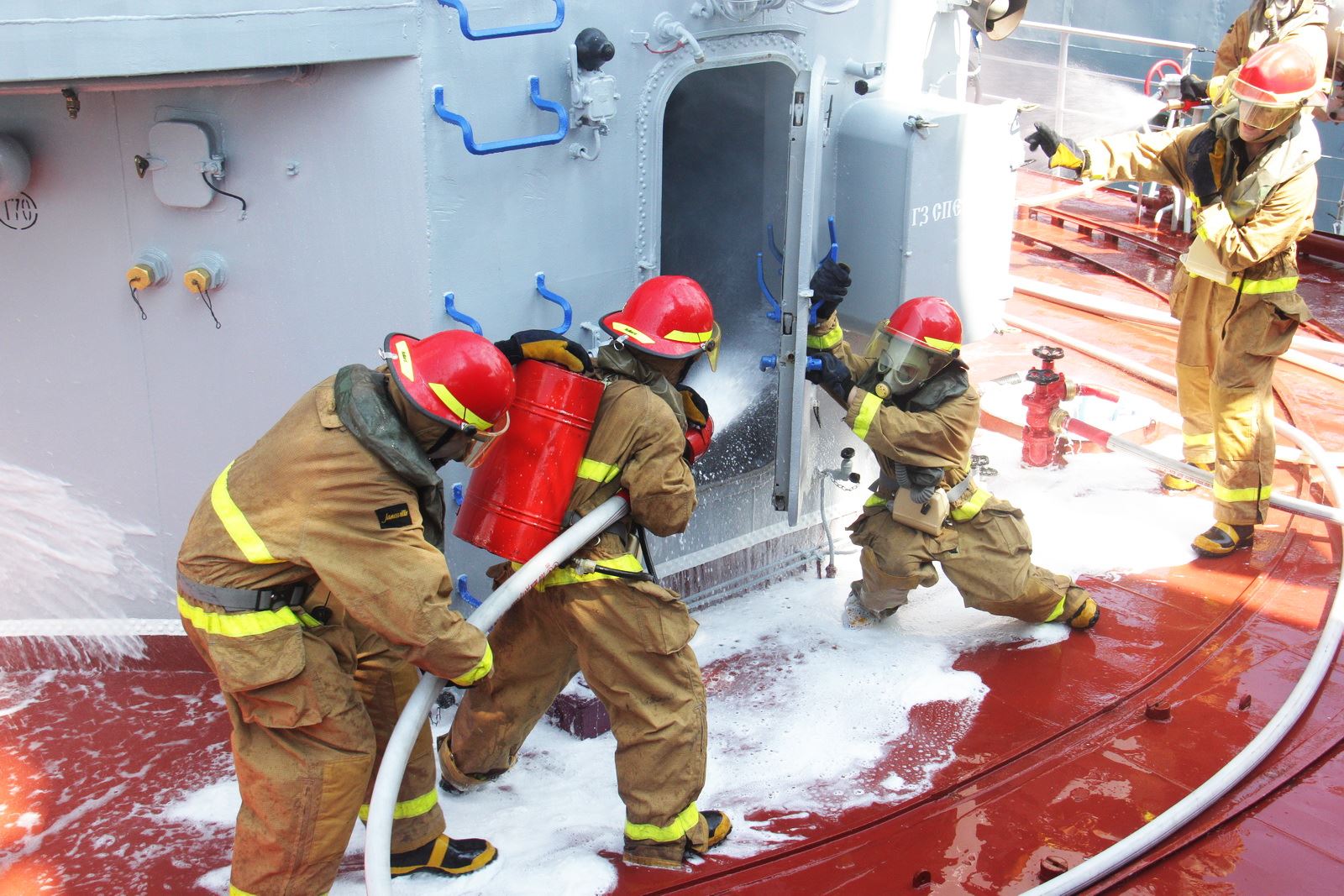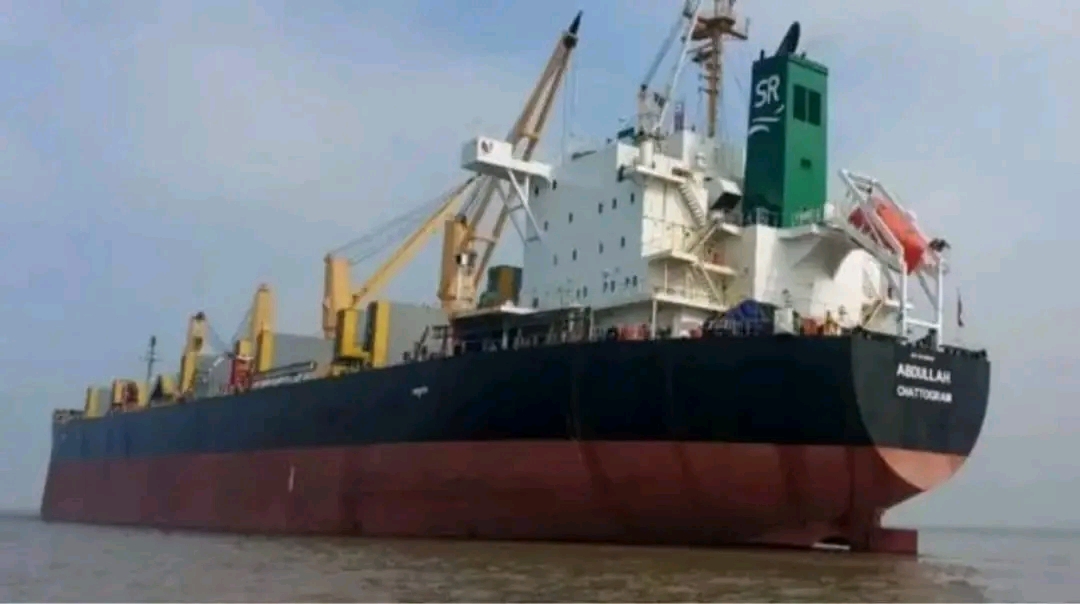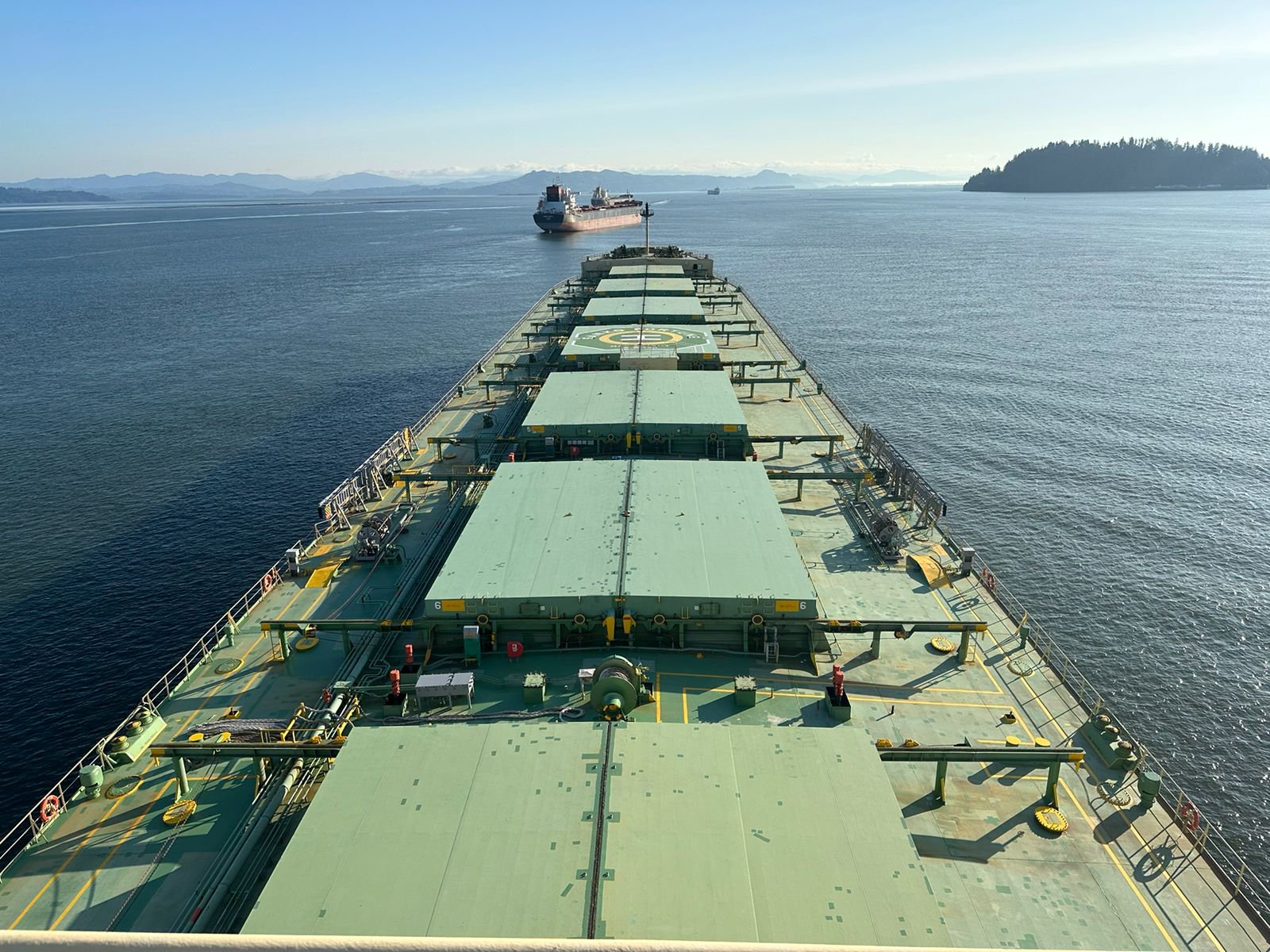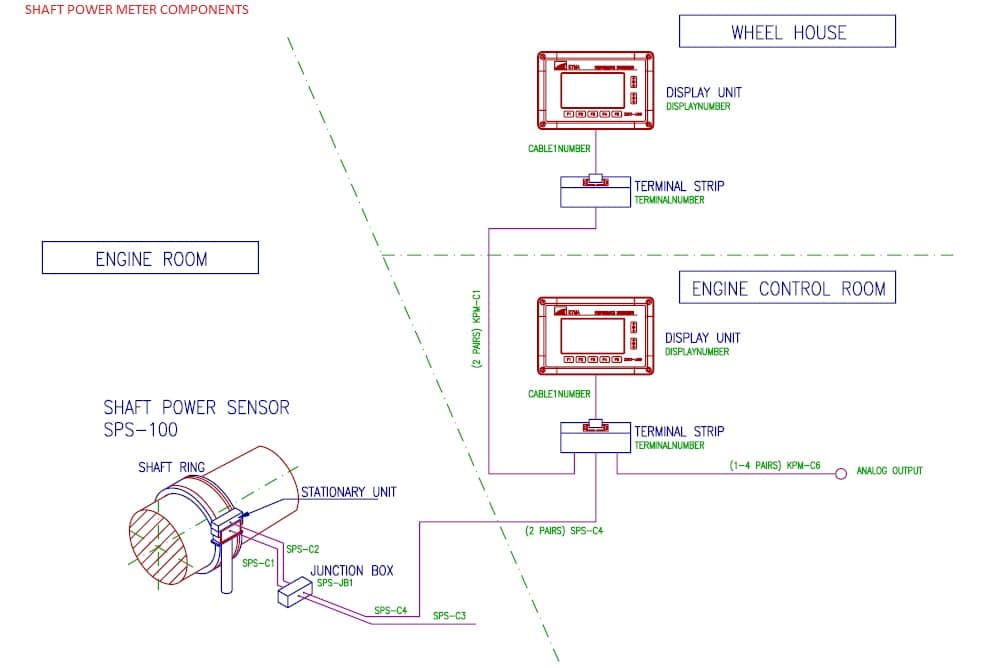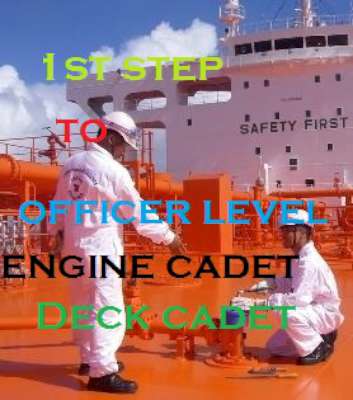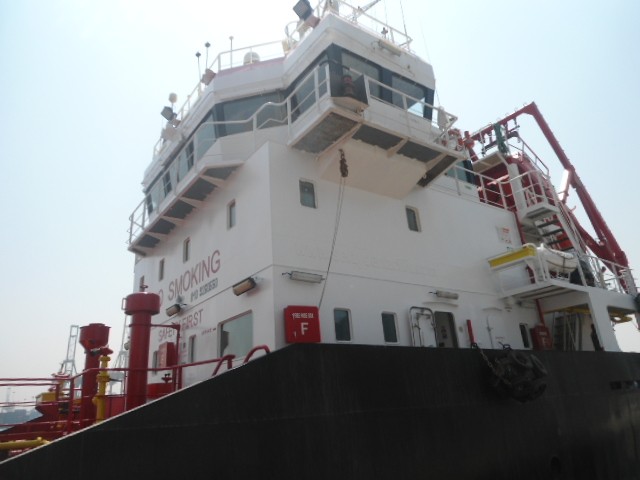A fire prevention techniques and safety program must be developed and maintain on board the ship, containing the following sections:
– classes and instructions;
– periodic inspections;
– maintenance and repair.
The causes of a fire may be:
– properties of the cargo;
– unsatisfactory cargo stowage;
– failure to take appropriate precautions in advance;
– insufficient surveillance of flammable cargo subject to spontaneous combustion;
– faulty electrical wiring;
– arson.
It is necessary to prevent a fire on the ship, to prevent its occurrence, but if for some reason this fails, then all measures must be taken to prevent the fire from intensifying and spreading, and so that it is extinguished as soon as possible.
The main condition for preventing a fire on board a ship is constant vigilance on the part of the crew and strict compliance with fire safety rules, primarily in relation to:
– the fuel system;
– electrical equipment;
– carrying out bunkering operations;
– use of open fire;
– carrying out hot work;
– organization of smoking on board the ship.
Fire prevention work on ships should be carried out:
– By ship crews by:
1. maintaining ship systems, mechanisms, equipment in good working order and in constant readiness for action and carrying out scheduled preventive inspections and repairs on their own or by special teams;
2. systematic study of regulatory and technical documentation on fire prevention, systems and means of detecting, localizing and extinguishing fires installed on the ship, developing skills in the use of ship fire-fighting equipment in conditions as close as possible to real fires;
3. periodic monitoring of the fire safety regime in ship premises, places where fire and explosion hazardous technological operations are carried out.
4. Fire-preventive work on ships by engineering and instructional staff of the fire-technical services of ports
Fire prevention methodology on ships
Preventing emergency situations is a priority task for the ship’s crew and the shipping company, the implementation of which is ensured by:
– compliance by the ship’s crew with safety measures;
– maintaining the vessel, its devices and equipment in working order;
– development and adherence to safe methods of dealing with accidents;
– equipping the vessel with a qualified crew; – availability of the necessary documentation on board the ship;
– conducting classes, training, and exercises to maintain crew competence.
The captain of the ship is responsible for the fire safety of a ship in operation or repair when there is a ship’s crew. The ship being repaired in the absence of a ship’s crew is a ship repair enterprise, which must be provided for in the agreement between the shipowner and the ship repair enterprise. Docked vessel
– an enterprise that carries out docking work regardless of the presence of a crew on the docked vessel. Responsibility for compliance with fire safety requirements when carrying out repair work by divisions of a ship repair enterprise rests with the enterprise carrying out these works. Responsibility for compliance with fire safety requirements during the transportation of goods, loading and unloading, bunkering, as well as repair and other types of work carried out by the ship’s crew or repair crews taken on a voyage rests with the captain of the ship.
The captain of the ship is obliged to inform the shipowner and the administration of the seaport of registration of the ship (the captain of the seaport) about all cases of fire, measures taken to rescue people and eliminate the fire, and the consequences caused by the fire. The vessel is not allowed to go to sea if:
– One of the stationary fire extinguishing systems, the emergency fire pump or its drive (including the emergency diesel generator) is faulty;
– one of the fire alarm systems is faulty (automatic or manual fire detection alarm, fire warning alarm or emergency alarm used for these purposes, warning alarm about the launch of volumetric fire extinguishing systems);
– the closures for sealing the premises protected by the volumetric fire extinguishing system, or the drives of these closures, are faulty;
– the possibility of evacuating people from ship premises in case of fire is not provided;
– the integrity of the fire bulkheads, the thermal insulation on them is damaged, fire doors, dampers or their drives are faulty;
– fire safety equipment does not meet specifications, is faulty, or its inspection or testing period has expired;
– the number of crew members who received training in the use of self-contained breathing apparatus within the established time limits;
Cooling means lowering the temperature of burning substances below their ignition temperatures required to maintain combustion.
Methods of Heat Distribution
Conduction : is the transfer of heat by solid materials when they are heated. The best conductors of heat are metals (metal bulkheads, deck floors and structural elements of the vessel). Controlled by cooling of materials.
Convection : is the transfer of heat with the movement of heated liquids, gases, and air. Warm spreads in all directions vertically and horizontally. Controlled limiting the source of fire by isolating it.
Radiation : is the transfer of heat using magnetism through space without intermediate substance. Can be limited using water vapor. Preventing temperature spread to adjacent rooms carried out by isolating the fire source and cooling adjacent bulkheads according to the entire possible perimeter of the emergency room.
Classes of Fires by type of combustion materials.
Class A: Hard Materials
Class B: Flammable liquids
Class C: Combustion of gases, incl. liquefied
Class D: Alkali metals (sodium, lithium, calcium, etc.)
Class E: Live electrical appliances and wiring.
The fire situation is the degree, nature and extent of the danger to people and material assets arising from a fire.
Factors determining the fire situation:
– dimensions of combustion (area covered by fire in sq. m)
– burnout rate of liquid and solid substances and materials;
– the amount of heat released, methods and conditions for its transfer;
– quantity and properties of combustion and thermal decomposition products;
– formation of gas exchange;
– threat of collapse of structures, boiling and release of liquids from tanks,
tanks and tanks;
– emergence of panic among people.
– command personnel do not have practical skills to bring into operation of fire extinguishing systems and emergency fire pump;
– the rules for transporting fire hazardous goods were violated;
– violations of the fire safety regime were not eliminated in a timely manner, identified during a previous fire safety inspection vessel.
Prevention of fire on a ship.
In accordance with the requirements of the Fire Safety Rules, on ships prohibited:
– Smoking in unauthorized places. Smoking in cabins on dry cargo ships is permitted only if ashtrays are provided, and smoking in bed must be excluded. On tankers, smoking is allowed in one or two rooms, established by order for the ship; smoking and storage of matches and tobacco on chemical tankers allowed only in a special room; Smoking is prohibited on gas carriers fully. Smoking areas must be equipped with metal bins containing water and have the inscription “Smoking area”;
– Smoking on open decks during bunkering and during reloading operations flammable and explosive liquids;
– Smoking in machinery spaces, ship holds, storerooms where flammable materials are stored substances;
– Use open fire (torches, candles, etc.);
– Store flammable and combustible liquids, rags in combustible and open containers, but raw and soaked in oil, gasoline, kerosene, varnishes, solvents, materials capable of self-ignition – in bulk, in bales and ligaments;
– Store paints, varnishes, solvents and other flammable liquids outside the paint store, as well as together with tow, rags and other fibrous materials;
-Store and dry near heating and electrical appliances, steam pipelines clothing, flammable items and materials;
– Arrange storage rooms for storing flammable materials under internal ladders;
-Clutter passages, main and emergency exits, approaches to facilities fire extinguishing systems, place and install additional equipment and inventory;
– Store acetylene and oxygen cylinders in the same room. When operating electrical equipment, it is prohibited:
– Install non-standard fuse links to fuses;
– Connect cables by twisting;
– Use non-standard electric heating devices for heating; take power supply from contact connections and parts of electrical equipment (jaws fuses and knife switches, switches, etc.);
conclusion
Most people tend to shrug off fire safety and prevention tips. But you have to remember that fires are unpredictable. They can strike anytime and anywhere, especially when you least expect it. Having basic fire safety measures put in place both at home and work can one day be the difference between life and death.
Regardless of who you are and what you do, make sure you’re you follow the fire safety and prevention precautions in your area. Review the fire prevention tips below together with your family and friends. By doing so, you’ll help create a safer place for you and your community to live.

